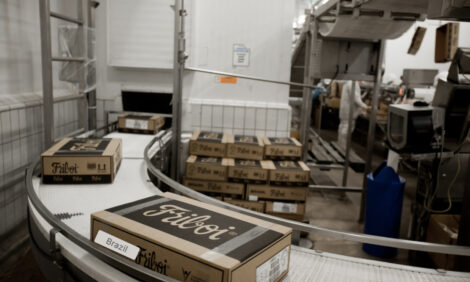



US scientists turn pests into poultry feed
Flies, mosquitoes show promise as feed sourceA team of US Agricultural Research Service (ARS) scientists has proposed turning mosquitoes and house flies into animal feed. Their project is one of three winning ideas in ARSX2021, a competition that incentivises researchers to propose innovative, high-risk ideas that cross disciplines and break boundaries to solve the US's most pressing challenges. The 2021 theme, "Harvest for a Healthier Future," focused on "transformative ideas that will help achieve a resilient and healthy food system."
The idea of farming insects as an animal food source was already the subject of one of the ARS Grand Challenge-Synergies, initiatives that "seek to unlock greater impact…by encouraging and facilitating synergistic interactions between scientists across locations, National Programs, and research systems." The ARSX project added a new dimension, by specifically proposing the use of nuisance insects like mosquitoes, which are abundant in agricultural settings, as the insect food source – not so much killing two birds with one stone as feeding many birds with one pest.
The team, composed of Alex Chaskopoulou, Lee Cohnstaedt, Kiki Zinoviadou, Annie Donoghue, Brenda Oppert and Komala Arsi, had never worked together as a group before, but the competition united them through their complementary areas of expertise, building camaraderie that benefited the project.
They have already made great strides, testing and refining several types of insect traps, and examining the captured insects to ensure they won't transmit pathogens up the food chain when they're eaten. When the design is finalized, the traps could be used by individual farmers to feed their own animals, or by larger commercial operations that could be net exporters of insect-based feed.
The insects seem likely to be a hit — with both animals and humans. In fact, as Chaskopoulou notes, chickens seem to vastly prefer mosquitoes to their current feed, "The moment that [the chickens got the mosquitoes], you could see in the farmers' faces, they were in awe, like: 'oh my goodness, how is this possible?' Because the chicks weren't just eating the mosquitoes, they were rushing to feed on the mosquitoes," he said.
"[Mosquitoes are] up to 63% protein, and we are competing with [feed made from] soybean, which is in the range of 40% protein," he added. "[Insects are] part of their natural diet, so biologically [the chickens] know what's good for them."
"There's a lot of anecdotal evidence that if chickens have access to insects, their yolks are yellower, the eggs taste different," added Cohnstaedt. "I think lots of people who have backyard chickens will attest that if you give chickens higher-quality proteins, minerals and [heart-healthy] omega-3 fatty acids, everything looks better, and it tastes better."
Zinoviadou, who specialises in food science, notes that Insects, in general, have a very high content of chitin, a polysaccharide that can have anti-microbial activity.
Of course, all these benefits will only accrue if farmers choose to adopt the insect-trapping and feeding practices the team is refining – a decision that comes down to cost. The team is acutely aware of that fact, and is working hard to make their solution practical and accessible. Their goal is to include in their insect traps only parts that can be found at a hardware store or junkyard.
If they succeed, the benefits will be manifold, including less pesticide use, more protein, higher-quality animals, and an easier, more cyclical, lower-waste environment that reduces CO2 and other environmental contaminants.










